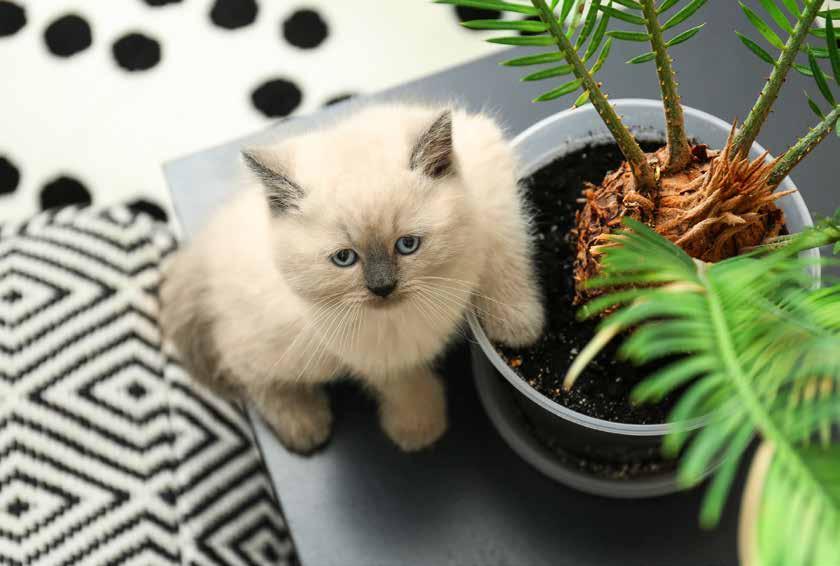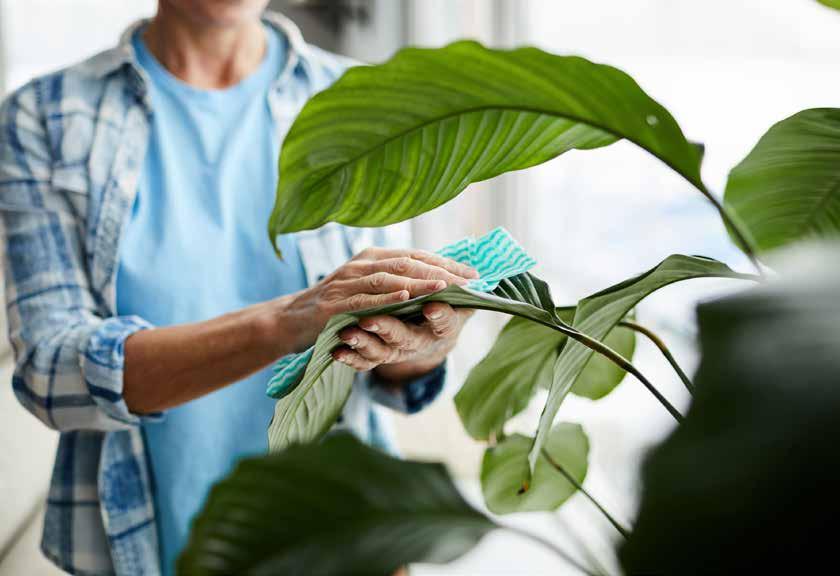
4 minute read
Planting Fresh Ideas Indoors
BEAUTIFY YOUR INTERIORS — AND FRESHEN THE AIR — WITH HOUSEPLANTS
BY ERIK J. MARTIN, CTW FEATURES
Advertisement
Nothing announces the coming of spring quite like budding vegetation, flourishing flora, and grandly growing greenery. Only you don’t have to wait for your outdoor flower beds to bloom or your garden to blossom before you can benefit from an overdue dose of Mother Nature’s majesty. You can get a jump start on the growing season right now by adding carefully selected houseplants to your abode.

A wide assortment of plants domesticated for domicile enjoyment are available —many with low-maintenance features and aesthetically pleasing attributes designed to enhance your living spaces. And those are just a few of the perks of indoor plant ownership. “Houseplants contribute yearround low-maintenance color and texture, purify the air of toxic household compounds, produce trace amounts of oxygen, and promote mental wellness,” says Katie Dickson, horticulture manager for Moore Farms Botanical Garden in Lake City, South Carolina. “Robust research has shown that simply being in the presence of a chlorophyllic friend speeds up the recovery time from illness, reduces depression, fatigue and irritability, lowers blood pressure, and has contributed a marked decrease in domestic and neighborhood violence — regardless of socio-economic circumstance.” Ellysia Applewhite, an interior designer with Spacejoy.com, a Santa Monica-based online interior design platform, says indoor plants release moisture vapor while undergoing photosynthesis, which increases air humidity.
“This helps keep respiratory issues at bay and improves overall health,” says Applewhite. “And houseplants also assist with concentration and creativity.”
Indoor plants can be used effectively as decorative elements in your interior design, as well.
“Houseplants actually add a creative layer in your living spaces. Plants enhance your home’s unique look and can be artistically displayed like any other home accessory,” insists Larry Greene, president of Case Design/Remodeling in Indianapolis.
That’s a lot of power packed into a compact home companion that doesn’t need to be walked, cleaned, groomed, talked to or heard. But not all plant species are ideal for your interiors. That’s why it’s smart to scout the intended placement areas and choose the right houseplants.
“I recommend deciding on the spot in your house first and then selecting a plant that will work in that location,” recommends Amy Enfield, horticulturist for Scotts Miracle-Gro in Marysville, Ohio. “There are several houseplants that will thrive in low-light or artificial light environments, requiring little care and serving as excellent choices for bringing a little green indoors.” Enfield. “They will grow in any light level, including low light, and they thrive regardless of whether you give them constant care or miss a watering or two.” Snake plants (Sansevieria trifasciata)
Applewhite says these plants love being pot-bound and flourish even if ignored, handling both full sun or low light. They also don’t need a lot of watering.” Chinese evergreens (Aglaonema)
These include: ZZ plants (Zamioculcas zamiifolia)
“With their thick, glossy leaves, these plants add a fresh, modern accent to any space,” says “Available in a range of color variations and patterns, these plants are very easy to grow in just about any light condition, including low light,” Enfield explains.

CTW PHOTOS

Ponytail palms (Beaucarnea recurvata)
This unique species stores water in its trunk and can survive weeks without watering, growing best in bright light, says Enfield. Pothos (Epipremnum aureum)
“Even though they like bright, indirect light, they also do well in areas that don’t receive a lot of sunlight,” Applewhite says. “Pathos will purify your indoor air of chemicals, too.” Monstera (Monstera deliciosa)
With their large, wide leaves that look like they have holes cut in them, “they’re great plants to create a bold statement in any home and can thrive in low light conditions,” adds Enfield.
But if you have pets or young children, “do your research and find plants that are safe, such as blue Echeveria or Boston fern,” Applewhite cautions.
When it comes to containers, Dickson prefers white, gray, earth-toned, or onyx-hued pots made of ceramic or other highquality materials.
“The best pots have holes in their bottom so excess water can drain away from the soil, preventing rot and plant death,” advises Enfield. “Containers with drainage holes will need some
sort of dish or saucer placed underneath to protect furniture and floors.”
Place plants that require more light (like succulents) near a sunny south or west-facing window.
“Plants that need moderate light can be placed in rooms that receive morning sun from an east-facing window or be placed on a table several feet away from a west- or south-facing window. Low-light plants will do well in rooms with north-facing windows, on a table several feet away from an east-facing window, or in a room that only sees artificial light for at least four to six hours per day,” Enfield says.
© CTW FEATURES










